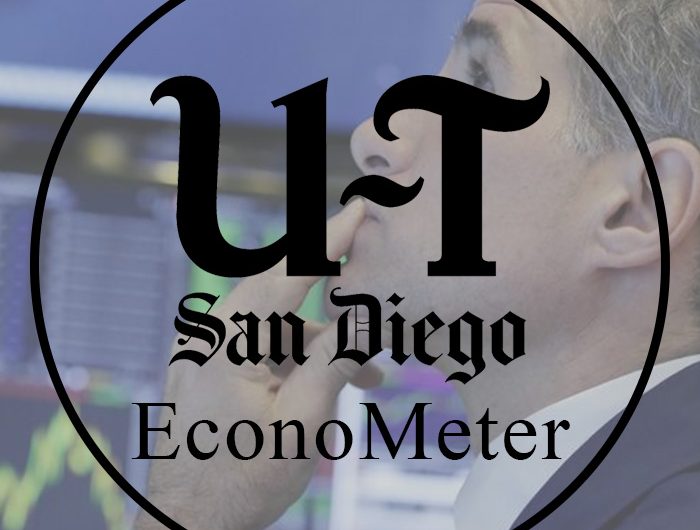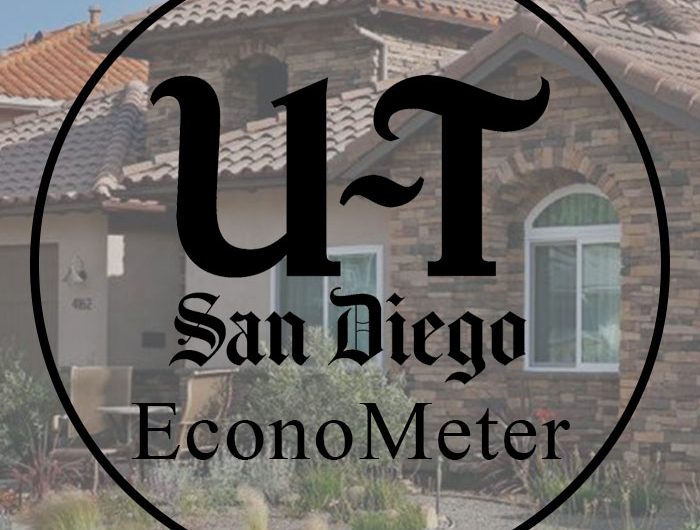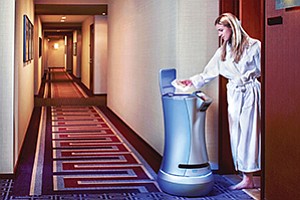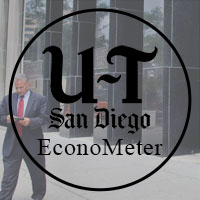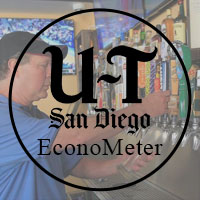Will the economy over the rest of the year top the results of the first half?

Question: Will the economy over the rest of the year top the results of the first half?
Bob’s Answer: Yes
Interest rates are still low by historical standards, the recovery from 2010-2016 was not particularly robust and tax reform and repatriation of funds remain available to us. Debt and equity are both readily available and outside on an external “event,” we have growing business conditions ahead this year, according to the Institute of Supply Management.
Ergo, we will grow GDP toward 3 percent this summer and end with a better second half than first half.
Is a 1 percent down payment mortgage a good idea?

Question: Is a 1 percent down payment mortgage a good idea?
Bob’s Answer: NO
Nothing-down loans were big losers for lenders and borrowers during the fairly recent housing bust. The latest version of the “near nothing down” mortgage is supposedly different but this is a bad idea.
Housing values have a tendency to decline after years of positive growth. Under federal rules, applicants must demonstrate an ability to repay debt, have solid credit histories and scores and must document everything.
That, however, is not a guaranteed safety net.
Hotels Make Room For Robots on Staff
TECH: Bots Could Reduce Labor Costs
By LOU HIRSH
Originally published May 18, 2017 at 1:51 p.m., updated May 18, 2017 at 1:51 p.m.
An autonomous service robot named Relay, from technology maker Savioke, delivers food, towels and other items directly to hotel guests in their rooms. A newly opened Fairfield Inn & Suites in San Marcos is the first hotel in the local region to deploy the technology.
San Diego — Forgot to bring toothpaste? Need an extra towel? Craving a snack?
Relay will take care of you.
That’s the name of the 3-foot-tall service robot resembling “Star Wars”’ R2-D2 that is serving guests at the newly opened Fairfield Inn & Suites in San Marcos.
Co-developed with locally based Sea Breeze Properties, the San Marcos hotel is the first in the San Diego region using fully autonomous robots developed by San Jose-headquartered Savioke.
Using specialized sensors, geo-positioning and other intelligent on-board technologies, the robots are programmed by Savioke to deliver items to any and all locations of a hotel, freeing up front-desk and other personnel to focus on their other responsibilities.
The technology could have a profound impact on the labor-intensive hotel industry. In addition to working 24/7, Relay is fairly fast and user-friendly, and doesn’t call in sick or ask for vacations or pay raises.
“You’re going to see this become much more common over the next three to five years in the industry,” said property owner Robert Rauch, CEO of San Diego’s RAR Hospitality Inc. and a longtime lodging industry consultant. “It is one effective way to deal with rising labor costs.”
$2,000 a Month
Rauch said his company, which employs about 30 people in San Marcos, leases one Relay to serve the new 116-room Fairfield Inn, at a cost of $2,000 per month under a three-year agreement with Savioke. He will be gauging its effectiveness in coming months before deciding whether to deploy the robot at other hotels that his company owns and manages.
But he added there are already signs that the major global hotel companies are itching to begin using the autonomous technology, which could soon become standard equipment globally.
Rauch noted that Hilton Worldwide is expected to begin its first significant pilot programs before the end of 2017, and will be followed soon after by Marriott International and the Starwood Hotels & Resorts brands that Marriott acquired last year, including Sheraton and W.
Many tech providers are gearing up to serve the hospitality and food service industries. In addition to the four-year-old Savioke, those include larger, longer-established players such as U.K.-based Starship Technologies and the Japanese electronics giant Panasonic Corp.
Convenience Factor
Reporting the results of its nationwide lodging industry technology study last spring, the news publication Hospitality Technology noted that 54 percent of hotels planned to spend more on technology during 2016 than in the prior year. The biggest priorities for technology spending, in order, were payment security, guest-room tech, internet service bandwidth, and mobile engagement with customers.
Commercial Executive Magazine – Executive Spotlight on Bob Rauch, Hotel Guru
 Founder and CEO of RAR Hospitality, Rauch’s name has arguably become as well-known as the hotel properties he develops or operates. However, he sure did not start at the top.
Founder and CEO of RAR Hospitality, Rauch’s name has arguably become as well-known as the hotel properties he develops or operates. However, he sure did not start at the top.
Rauch first dipped into the hospitality industry when he got a job as a banquet dishwasher in 1974 at Ramada Inn in Champaign, IL.
/// Through Unbreakable ambition and desire to aim higher, he climbed the ladder from Manger Trainee, Sales Manger, Food and Beverage Manager, and then eventually promoted to General Manger within a span of jut five years, making him the youngest GM for Ramada in the country at the time.
Check out the rest of the Executive Spotlight starting on page 64
Spring Conference Season – What is the Buzz?
Spring brings on many conferences including our own Lodging Industry Forecast Event (LIFE) Conference held in March. Recently we’ve had Meet the Money, held in early May and the upcoming NYU Hotel Conference, to be held in early June. In this article, after Meet the Money in LA and before NYU in New York, we analyze one and predict the other.
Meet the Money
At Meet the Money last month, we learned that capital is still available for the right sponsor with the right location, brand and equity. The glass remains half-full, not half-empty. And we heard that consolidation will likely continue. Perhaps Mike Cahill’s presentation on behalf of the Lodging Industry Investment Council (LIIC) said it best with the title “Forecasting Clear Skies with Some Clouds and Slightly Cooling Temperatures.”
Many of the sessions included a discussion on a reduction of Chinese investment and an increase in Private Equity to finance most hotels and many attendees seemed to believe the economy had more runway at least in 2017. The biggest fear seemed to be new supply. In a session that I moderated called, “Brands, Soft Brands or Independents: Who Wins?” the operators on my panel were very savvy in explaining how level the playing field is today between these three entity types, especially in dving market share.
Additional topics discussed at Meet the Money were development and redevelopment, the economy, lodging industry metrics, financing availability, EB-5, modular construction and valuations. This conference might be one of the last industry conferences of this “extra-inning” recovery period that has a positive tone on financing. Lenders still sounded relatively bullish—let’s see how NYU fares on this point as the new supply pipeline crosses the threshold of demand levels later this year.
Speaking of NYU, this is a much larger version of JMBM’s Meet the Money. JMBM’s annual event, developed almost 30 years ago by Jim Butler is great and with less than 400 attendees, it is easy to approach all speakers, panelists, JMBM staff and attendees over the two-day period. The NYU Hotel Conference is a monster event, with a broader array of topics that will include all of the above but will also delve more deeply into design, travel trends, OTAs, asset management, technology and much more.
I expect that the CEOs that kick off the event will not all agree on where we are in terms of the economy, Airbnb, OTAs, minimum wage and financing. They will likely agree that consolidation will continue but might disagree on whether or not REITs are hot or not. All of these subjects will be interesting because we are at a “tipping point” where several facets of hotel marketing and operations are going to undergo change. These include:
- Robotics
- Minimum Wage Growth
- Occupancy and Rate Growth
- Airbnb and OTA Impacts
- Millennials
Robotics or utilizing Artificial Intelligence will increase because of the combination of wage growth and availability of technology. We just unveiled a robot at our newly-opened Fairfield Inn & Suites by Marriott. Created by Savioke, the robot delivers supplies or food and beverage to guests and is absolutely adored by guests and staff alike. This is clearly a trend as it will reduce operating costs over time—and no paid overtime, no PTO or sick days. Look for more of this activity in housekeeping and food and beverage.
Minimum wage growth must slow down because average rate growth will be slowing down as the economy transitions to a soft-landing over the next couple of years. The large cities have not been spared this significantly increased cost and when added to health care costs, will dramatically increase the cost of doing business. A very recent study tried to claim that only inferior restaurants will go out of business as a result of wage increases but it was a limited and flawed study.
Airbnb is at war with hotels and frankly OTAs are as well. The truth is, we can all co-exist but tell that to a hotel owner who no longer fills during peak periods due to Airbnb or sees shrinking margins due to distribution channel cost increases caused by OTA dominance. In a publication by Kalibri Labs, sponsored by AH&LA, distribution costs have ramped up markedly and hoteliers must understand how to obtain direct to web business.
Millennials are becoming the powerhouse that Bill Marriott predicted just 5 or 6 years ago. They represent more than half of the traveling public now and are driving decisions about design, marketing, digital services and much more. This trend will continue for a very long time as those of us who are Baby Boomers know that we dominated the mix for three decades.
Being a hotelier is a great and noble profession and we should see a very strong summer ahead—smile and keep those chins up and rates growing! Enjoy the ride while it lasts!
Robert A. Rauch, CHA
NAFTA: Should it be renegotiated?

Question: Should the North American Free Trade Agreement be renegotiated?
Bob’s Answer: YES
The original agreement was negotiated 25 years ago. At that time, there was virtually no electronic or digital commerce. Mexico, Canada and the United States have all been ready to update the agreement. While it will take time to work it through Congress, now is the time to get it done since trade agreements are worth very little without congressional approval. Let’s do it!
Ten Years After – Hospitality Technology 2017
No, for those of you who appreciated Alvin Lee and Ten Years After as a kid, this is not about music. This is about the 10 year anniversary of the technology explosion caused by Facebook, Twitter, iPhone and Android. Technology has finally been applied…
Are Trump’s plans to revive Export-Import Bank a good thing?

(Jacquelyn Martin / AP)
Question: Do you think reviving the Export-Import Bank of the United States is a good thing?
Bob’s Answer: YES
The Export-Import Bank provides for American companies to compete in foreign markets or where countries require government guarantees that the bank’s loans provide. President Trump must staff this with experienced banking executives with strong opposition to cronyism, the primary objection to this organization.
The bank can and should be an important element in boosting the economy and specifically manufacturing employment.
Will a rising minimum wage promote more spending to make up for lost jobs?
(K.C. Alfred / San Diego Union-Tribune)
Operation renovation: Hospitality industry gets a makeover

With an impressive collection of new construction, renovations and modernization, Arizona’s hospitality industry has undergone more makeovers in the last year than the “Real Housewives of Beverly Hills.”
Older hospitality assets experience major facelifts and overhauls to keep up with the changing standards of Arizona’s hospitality industry, which contributes $12.8 billion annually to Arizona’s Gross Domestic Product. Meanwhile, trendy boutique hotels continue to pop-up across the Valley attracting guests with chic modern designs and technology.
Overall, Robert Rauch, founder and chief executive officer at RAR Hospitality as well as an internationally recognized hotelier who manages several hotels in the Valley, describes Arizona’s hospitality industry as rock solid with four consecutive years of growth.
While Rauch predicts the industry is headed for a great 2017, he notes all the renovations occurring across the state seem to have a nod to the Millennials, which now make up the largest generation in the United States.
Reflecting back on his 40-plus years of hospitality management experience, Rauch says, “20 years ago, big lobbies with fancy restaurants were a thing. 10 years ago it was light, bright and airy. Now it is social, social and more social.”
Today’s travelers are less drawn to posh, super-luxury, all granite and marble lobbies of iconic hospitality properties from 20-years ago that had no economic return.
“Today, look at the trendy hotels,” says Rauch. “They are classy but very contemporary, very socially inviting, not begging for you to say, ‘I wonder if I should sit on that super plush couch.’”
He described the former Ritz-Carlton at 24th Street and Camelback Road as the quintessential stuffy hotel and restaurant that was transformed into the Camby, which appeals to a fun-loving youthful crowd.
Instead, the new design trends that Rauch sees gaining the most momentum include removing standard check-in desks, creating more social public spaces and more minimalist designs.
“This will get people out of their rooms and into social spaces, spending both time and money at lobby bars and cafes,” he explains.
The idea is to create on-site amenities for visitors to enjoy along with more socially engaging common spaces for guests to connect through their shared interests.
This may translate into a lively rooftop pool and bar, state-of-the-art fitness centers and conference rooms or hotel elevators equipped with a photo booth to take selfies like at the new Moxy Hotel in Tempe, which opened last April.
Designed to be inclusive, connected and progressive, the 186-room boutique hotel boasts a fast Wi-Fi network and being the first Marriott brand hotel to use Bluetooth radio frequency identification (RFID) for keyless room entry.
“Technology is the big difference today,” says Rauch. “Without renovation, you are left behind.”
Embassy Suites by Hilton reports, currently 45 percent of all its properties are undergoing renovations aimed at modernization and by 2019, more than 75 percent of Embassy Suites by Hilton properties will have an interior that is less than six years old.
That includes the yearlong, top-to-bottom $25 million transformation of the former Chaparral Suites in Scottsdale into the Embassy Suites by Hilton Scottsdale Resort, which held its grand opening in October.
Managed by Crescent Hotels & Resorts, the property’s renovations consisted of upgrades to the entire 15-acre property, all 312 suites plus the 11,000-square-foot conference center, 60,000 square feet of flexible meeting space and all common areas.
“We’ve replaced every stick of furniture, updated every room, and refreshed every surface from the lobby to the landscaping to the terra-cotta roofing,” says Alan Klein, general manager of the Embassy Suites by Hilton Scottsdale Resort.
Today’s savvy travelers now prefer guest rooms that have multi-function “zones” with flexible design layouts.
By removing permanently built fixtures like the old room’s designated desk or wet bar and installing easily moveable furniture, guests can adapt the suite to the best way that suits them, explains Klein.
He is very excited about 2017 adding, “We have already seen a very nice increase in the number of bookings coming into the resort.”
Looking at 2017 and beyond, Rauch predicts four-percent rate growth and two-percent occupancy growth for the state’s hospitality industry.





